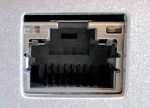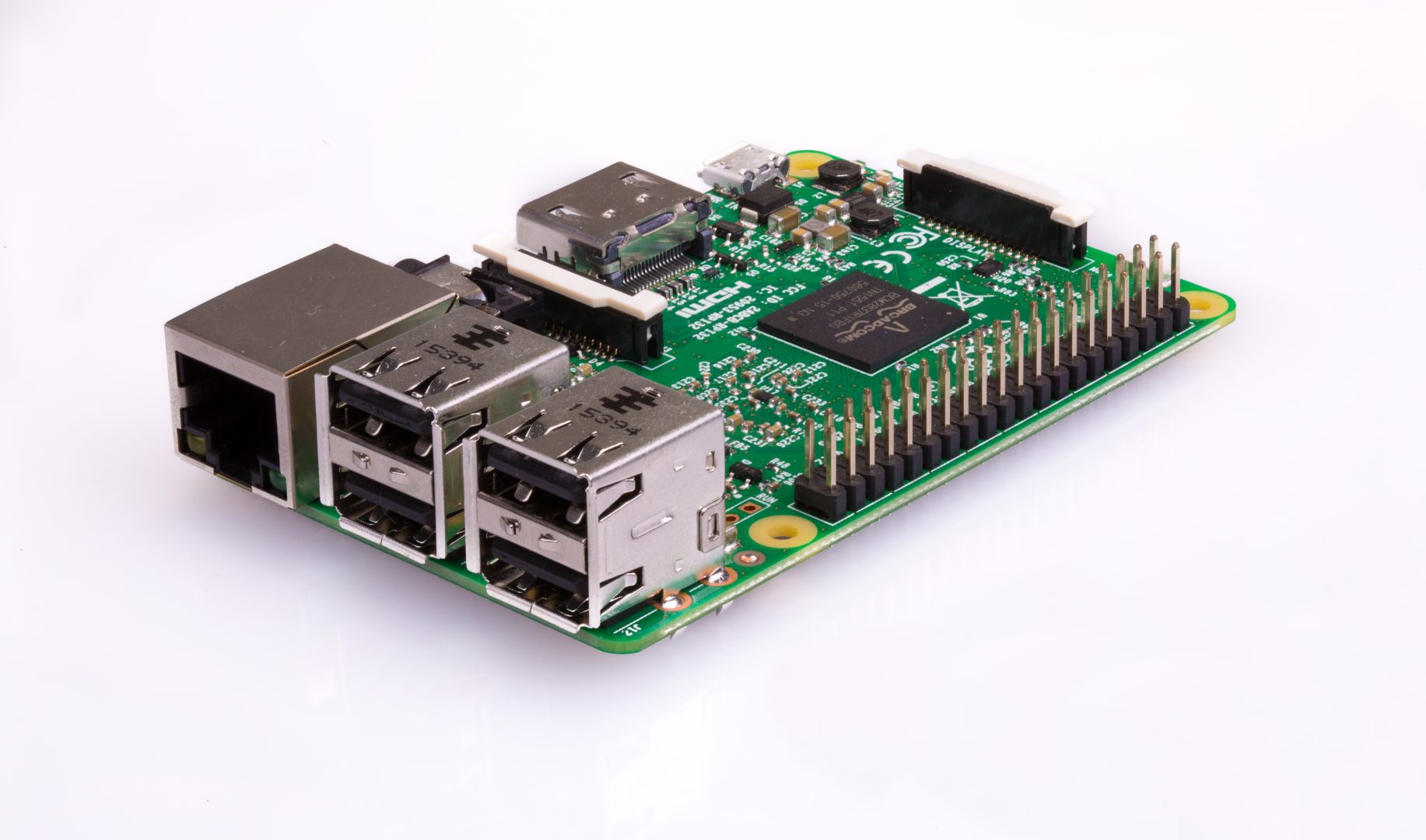(Continued from Part 1.)
There are two additional items required to run a Raspberry Pi – a microSD card for storage and a power supply. I’ve set up, configured and run dozens of Raspberry Pis since they came out in 2012, and 90% of all of the problems I’ve ever encountered with them are the result of either a bad microSD card or inadequate power supply, so you don’t want to cheap out on either.
For the microSD card I strongly recommend using a SanDisk MAX ENDURANCE model of at least 64GB, but bigger is always better, so get a 128GB or even a 256GB one if you can afford it. For a power supply you’re going to need something that can supply a clean 5V/2.4A via microUSB for either of the Pi 3 models, or 5V/3A via USB-C for the Pi 4 model. Note that the AC power supply is just for initially configuring the Raspberry Pi – I’ll be talking about how to power your entire setup using a battery power supply later on.
One of the limitations of microSD cards is that they were never designed to handle the types of read and write loads that operating systems generate, so they can be slow and they’ll ‘wear out’ after a couple of years of hard use. One alternative is to configure your Raspberry Pi to boot from an external SSD storage device, which is a lot faster and can provide a lot more storage. I have mine configured to boot from a 240GB JOIOT Mini Portable SSD and use a 2TB Western Digital Elements SE SSD for extra storage, which provides a ton of store for reference content, videos, pictures, etc.
If you want to use an external SSD (Solid State Disk), here are some instructions on how to set that up – ‘How to Boot Raspberry Pi 4 From a USB SSD or Flash Drive’. For this article, I’ll just assume that you’re starting with a microSD card. Note that it’s also possible to use an inexpensive high-capacity USB thumb drive for either the boot/store device (in place of the microSD card), or as supplementary external storage, but as with microSD cards, USB thumb drives tend be be slower and less reliable, whereas SSDs are designed to behave just like spinning disks but a lot faster.
The Raspberry Pi comes as an exposed circuit board, so I recommend getting a case to protect it. For my Raspberry Pi 4 Model B I used an aluminum case from Geekworm that doubles as a heat sink, but there are dozens of less expensive less expensive options available from multiple vendors that work fine. Just be sure to get one that’s designed for your exact model of Raspberry Pi, since the naming can be a bit confusing and there are minor differences in layout between the models.
If you’re having trouble finding a Raspberry Pi and you don’t want to wait, there are several other single-board computer options available that support the software I’ll be discussing, including the ODROID-C4, ODROID-HC4, ROCK64 and ROCKPro64. I’ve used several of these boards for other projects in the past, but I’ve only used a Raspberry Pi for the systems I’m discussing in this article. If you decide to use one of the alternative boards you may have to do some research on your own if you run into any problems.
The next item on the list is a workstation – a laptop or PC of some kind. For a disaster scenario, I prefer a laptop since most of them can be powered with an optional 12V car adapter or even from a USB-C port, and they’re a lot easier to store, transport and protect than a full-size desktop computer. For the initial setup you’re going to need a Windows, MacOS or Linux system to prepare the Raspberry Pi, but for the actual deployed operational environment you can also use less expensive Chromebooks if you want. You can find refurbished Chromebooks for around $50 and a decent refurbished Windows laptop for under $200 if you don’t already have one. Apple laptops tend to be a lot more expensive and I don’t have any experience with those, but you can use one if you want.
If you have an older Windows laptop you can potentially breathe some new life into it by replacing Windows with Linux. If you don’t currently own a laptop or computer and you plan on just using an inexpensive Chromebook for a workstation in your deployed environment after a disaster, you can rent a Windows laptop computer for around $25/week at someplace like Rent-A-Center to do the initial set up and configuration. If your laptop doesn’t have a built-in microSD card reader you’re also going to need an external microSD adapter for the workstation so you can load the operating system and application for the Raspberry Pi onto the microSD card.
As with the Raspberry Pi I recommend you connect your PC workstation to the disaster network using a physical Ethernet cable instead of WiFi, so if your laptop doesn’t have have an Ethernet network port you can get an inexpensive USB Ethernet adapter (probably the same one I recommended above for the Raspberry Pi 3 Model A+). Using Ethernet is optional – connecting your workstation to your disaster network via WiFi will also work.
The final hardware component is a mobile device. You’re going to want one cell phone or tablet for each person in your family, team, group or community, and I’m betting that most people already have one they can re-purpose. It doesn’t matter if it’s old or Android or Apple or what cellular company it uses, as long as it can connect to a WiFi network and install the necessary apps it should work. I’ve connected to my disaster network with a five-year old OnePlus 3T running Android 7.0 and I had no problems running the applications I’ll be discussing or accessing my local cloud services, and you can buy a quite usable rugged phone like a Ulefone Armor X6 for around $75. You can also configure your current daily-use Android or Apple phones with the required applications and just switch it over to your disaster network when an emergency occurs, so you don’t really need any dedicated mobile devices. Whenever I upgrade my cell phone I wipe the old one, configure it to connect to my disaster network, install the necessary applications and stick it in my EMP box for emergency use.
Initial Set Up
The steps required to initially set up your disaster network vary slightly depending on how you connect to the Internet in your home – wired, cord-cutter or none. A wired home connection is one that uses an Internet Service Provider (ISP) like Verizon FiOS, Xfinity, CenturyLink, DSL, etc. that has a wire or satellite connection running into your house connected to a modem or router with one or more Ethernet ports on the back of the router. In case you’re not familiar with it, here’s what an Ethernet port looks like:

A “cord-cutter” approach is where someone uses only cellular wireless services to connect directly to the Internet on each individual phone or tablet and has no network at home. This approach is a lot more common in urban areas and among younger preppers. Note that if you use a cellular modem (aka ‘mobile broadband modem’ or ‘hotspot’) such as a Netgear Nighthawk, Router Alcatel Link Hub, or Asus 4G series device that includes an Ethernet port you should follow the instructions for a wired home network, since you’ll be using the Ethernet port on your cellular modem for setting up your disaster network.
If you don’t have any Internet access where you live you can still set up and configure this disaster network – you’ll just need to visit somewhere like your local library, a McDonald’s, or any other place that provides free or paid Internet access via WiFi, connect your laptop to the Internet, download the required software files, install the required apps on your mobile device(s), then head back home to finish the installation.
For a wired home network the first thing you need to do is to figure out what your home network address is to avoid a conflict when you temporarily connect your disaster network to it. The address we’re concerned with is called an ‘IP V4’ network address and consists of four numbers separated by periods – for example, ‘192.168.10.8’. The first two numbers are almost always going to be ‘192.168’, but the one we need to be concerned about is the third number (‘10’ in the previous example). Note that there may be a second type of network address called ‘IP V6’ that looks something like ‘fe80::1ce1:7eff:fec2:436’ – you can ignore that; we only care about the four numbers separated by periods. It’s actually pretty easy to find your network address, depending on what type of device you’re using at home. On a device that’s connected to your home network:
- Android or Apple phone – Follow these instructions, then write down the third number (typically something between 0-10, but it can be three digits, up to 254).
- Microsoft Windows 10 – Follow these instructions, scroll down and find the line that says ‘IP V4 Address’ and write down the third number (typically something between 0-10, but it can be up to 254).
- Apple Mac – Follow these instructions on how to find your network address, find the line that says ‘IP V4 Address’ and write down the third number (typically something between 0-10, but it can be up to 254).
If you’re using an older or different device that I didn’t cover you may have to do some web searching on how to find your network address when you’re connected to your home network.
(To be continued tomorrow, in Part 3.)










